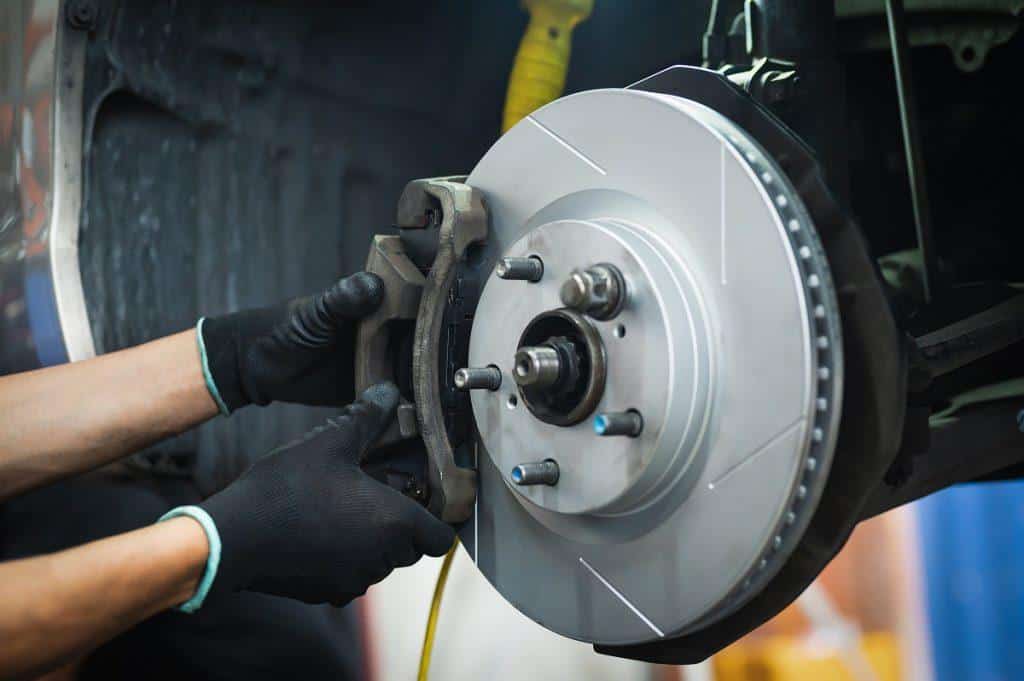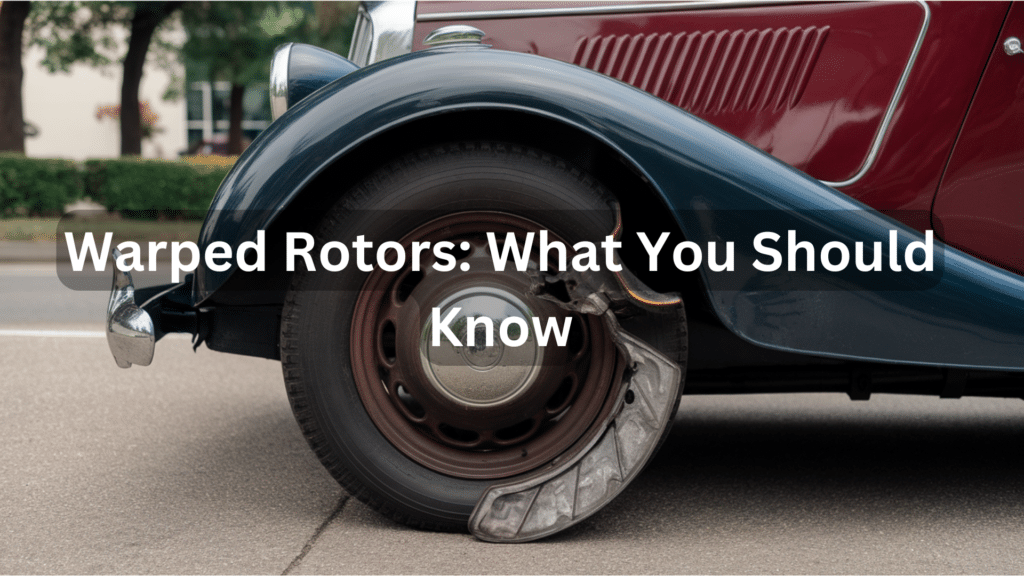Are your brakes making weird noises? Do you feel shaking when you press the brake pedal? You might have warped rotors.
In this guide, I’ll explain everything you need to know about warped rotors. You’ll learn what causes them, how to spot the warning signs, and what to do about them.
I’ve been working with brakes for years, and I know how scary it can be when your car doesn’t stop properly.
By the end of this article, you’ll understand exactly what’s happening with your brakes and how to fix the problem.
What are Warped Rotors?

Brake rotors are the metal discs attached to your wheels. When you press the brake pedal, brake pads squeeze against these rotors to slow your car down.
Warped rotors aren’t actually “warped” in the way you might think. The term is a bit misleading.
What really happens is:
- The rotor surface becomes uneven
- High spots and low spots develop
- The brake pad can’t make even contact
Think of it like a record with bumps. When the brake pad tries to grab the rotor, it jumps over these bumps. This creates vibration, noise, and poor braking.
Why Do Brake Rotors Warp
Several things can cause your rotors to develop these uneven spots:
- Heat damage: This is the #1 cause. Slamming on your brakes repeatedly causes extreme heat. This heat can change the shape of the metal.
- Poor quality rotors: Cheap rotors often can’t handle normal braking heat.
- Improper installation: If lug nuts aren’t tightened correctly, the rotor won’t sit flat.
- Normal wear and tear: All rotors eventually wear out. It’s just a matter of time.
- Staying parked too long: When a car sits unused, especially in damp areas, rust can form on rotors.
The good news? Most of these causes are preventable with regular maintenance.
Common Signs To Look For
How do you know if you have warped rotors? Look for these warning signs:
Vibration or Pulsing
The most obvious sign is vibration when braking. You might feel:
- Shaking in the steering wheel
- Pulsing through the brake pedal
- Vibration throughout the car
This happens because the brake pad is hitting high and low spots on the rotor.
Squealing or Grinding Noises
Unusual sounds when braking often point to rotor problems:
- High-pitched squealing
- Metal-on-metal grinding
- Scraping noises
These sounds should never be ignored! They mean your braking system needs attention now.
Longer Stopping Distances
Have you noticed your car taking longer to stop? Warped rotors can’t grip properly, reducing your braking power.
This is especially dangerous in emergencies where every foot matters.
Visible Damage
Sometimes, you can actually see rotor problems:
- Grooves or scoring on the surface
- Blue discoloration (from heat)
- Rust spots or pitting
Take a peek through your wheel spokes. If the rotor surface looks uneven or discolored, that’s a problem.
Brake Pad Wear
Warped rotors cause brake pads to wear unevenly. If your mechanic says your pads are wearing strangely, your rotors might be the real culprit.
How to Replace a Warped Rotor
Fixing warped rotors usually means replacing them. Here’s what the process looks like:
Tools You’ll Need
- Jack and Jack stands
- Lug wrench
- C-clamp
- Socket set
- New rotors and pads
- Brake cleaner
- Anti-seize lubricant
Basic Steps:
-
Safety first! Make sure the car is properly supported on jack stands.
-
Remove the wheel by loosening the lug nuts and pulling the wheel off.
-
Remove the brake caliper by unbolting it from the bracket. Don’t let it hang by the brake line! Use wire or string to support it.
-
Take off the old rotor. It might be stuck – if so, tap it gently with a rubber mallet.
-
Clean the hub surface where the new rotor will sit.
-
Install the new rotor and make sure it sits flat.
-
Compress the caliper piston using a C-clamp.
-
Reinstall the caliper with new brake pads.
-
Put the wheel back on and tighten the lug nuts in a star pattern.
-
Repeat for each wheel with a bad rotor.
-
Pump the brakes to restore pedal pressure before driving.
Should you do this yourself? If you’ve never worked on brakes before, this might not be the best first project. Brakes are critical safety components. When in doubt, let a professional handle it.
Professional Repair Costs
If you take your car to a shop, expect to pay:
- $200-500 for parts (for all four wheels)
- $150-300 for labor
- Total: $350-800 depending on your car
This might seem expensive, but it’s cheaper than an accident caused by brake failure!
Conclusion
Warped rotors are a common problem with clear warning signs. The most important symptoms to watch for are vibration when braking, unusual noises, and decreased braking power.
Don’t ignore these warning signs! Brake problems only get worse – and more expensive – over time.
Regular maintenance, careful driving, and prompt attention to problems will keep your braking system working properly for years to come.
Remember: your brakes are your car’s most important safety feature. Taking care of them isn’t just about saving money – it’s about keeping you and others safe on the road.
Frequently Asked Questions
Can I resurface my rotors instead of replacing them?
Sometimes. If the rotors aren’t too damaged and still have enough thickness, they can be “turned” (resurfaced) on a lathe. However, most modern rotors are thin to save weight, so replacement is often necessary.
How long do brake rotors typically last?
Most rotors last 30,000-70,000 miles, depending on your driving habits, the quality of the rotors, and local driving conditions.
Can I replace just one rotor?
It’s best to replace rotors in pairs (both front and rear) to ensure even braking.
How can I prevent my rotors from warping?
Avoid “riding” your brakes on long downhills, and give them time to cool after hard use. When replacing them, buy quality rotors and have your brakes inspected regularly.
Is it dangerous to drive with warped rotors?
Yes. While you can drive short distances, warped rotors reduce your braking ability and can lead to brake failure in emergencies.


